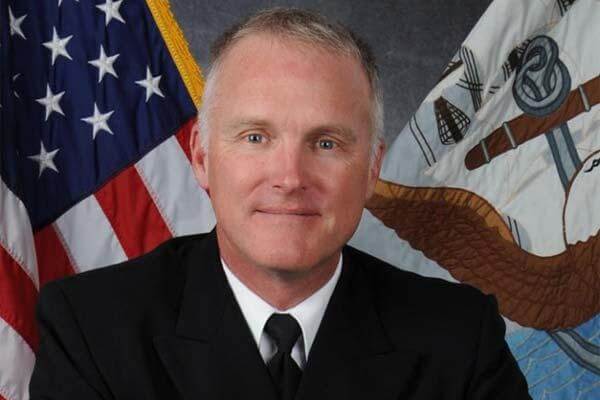With U.S. ships and troops operating in increasingly close proximity to near-peer global competitors, the commander of Navy Surface Forces wants foes to get used to disappointment.
Speaking at the Surface Naval Association in Washington, D.C., on Tuesday, Vice Adm. Thomas Rowden said he wants to develop a more lethal fleet to deny the enemy everything -- even the hope of future victory -- by means of increased deception, strategy and domination of the seas. Rowden's remarks came a day after he released his Surface Force Strategy: a 15-page document laying out, in broad strokes, his plan to achieve the goal of "distributed lethality" and sea control.
The need for a new strategy comes as the Navy works on increasing the size of the fleet and key powers re-emerge as competitors for control of the sea, Rowden said.
"In the last decade, Russia has emerged as a naval power after decades in which it allowed its fleet to rust and decay," he said. "Simply put, the world has changed and so must we."
The expanded role of deception through various means to keep the enemy guessing about the position and activities of deployed ships begins with a change in mindset, Rowden said.
"The reality is, with our warfighters, there needs to be an understanding of, what can we do to deceive the adversary," he said. "If we can get our adversary to wake up on a daily basis and say, 'I didn't see that coming,' I think that gives us the opportunity to buy time to execute that conventional deterrence piece."
Rowden said he would continue to make the case for putting more weapons on existing ships to make them more deadly. Since his command debuted the concept of distributed lethality in 2015, he said, Navy leaders have made additional investments in Tomahawk and SM-6 missiles as the Surface Electronic Warfare Improvement Program, blocks 1, 2 and 3.
More investments in new technology may be forthcoming.
"We need to get back in the business of killing ships and submarines, and we need to do it at extended range," he said. "We need to generate high-quality data and get it to the shooters no matter where they are in the theater."
A deadlier Navy will likely also be a bigger Navy. Rowden said he planned to continue to support the Navy's long-range shipbuilding plan and modernization strategy, adding that he hoped to see more guided-missile destroyers and littoral combat ships if the service commits to building more ships.
"Given the Navy's recent release of a 355-ship force structure assessment, I think we can safely say that the 2018 30-year shipbuilding plan is in all likelihood going to be larger than that laid out in the 2017 plan," he said.
"As we build the next-generation fleet, we must mark the readiness and modernization challenges in our current ships so we have a firm foundation on which to train and operate. This is an exciting time."
-- Hope Hodge Seck can be reached at hope.seck@military.com. Follow her on Twitter at @HopeSeck.





























